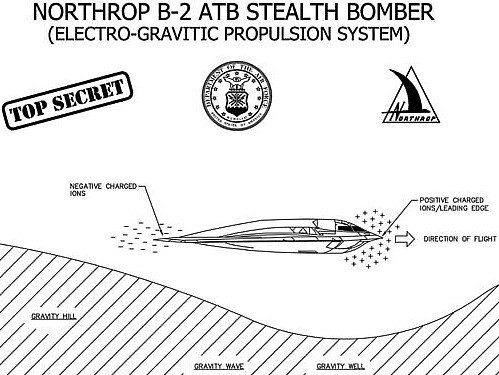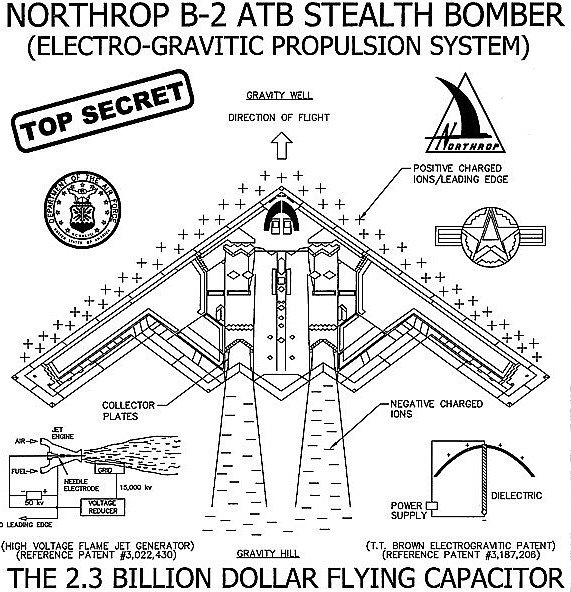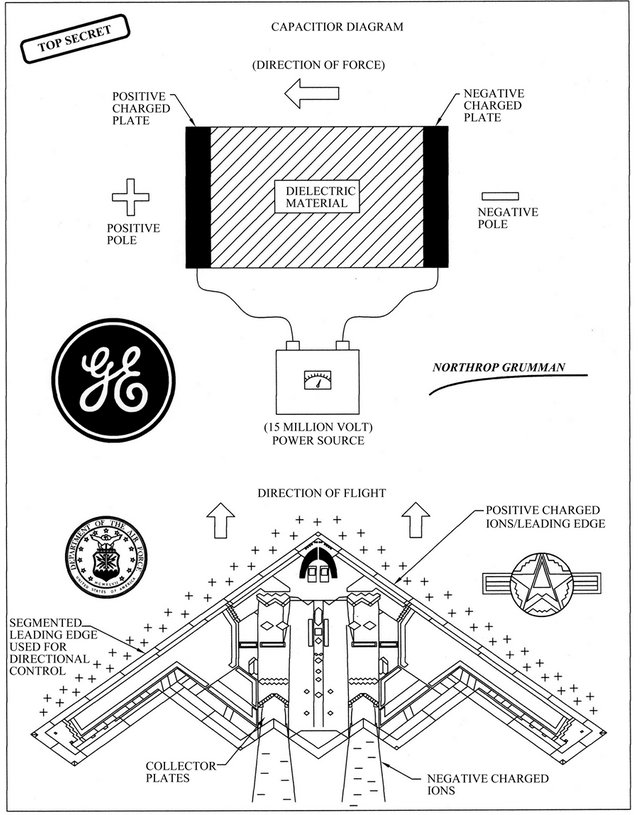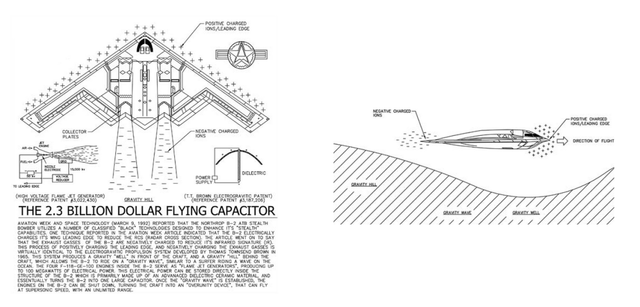
"Electrogravitics can be traced to Nikola Tesla’s work with high-voltage discharges in the late 1800s. When Thomas Townsend Brown discovered that electrostatic and gravitational fields are closely intertwined, the world changed."
https://www.gaia.com/article/electrogravitics-antigravity-tesla-and-a-military-cover-up

"To explain, “electrogravitics” is the science of using high voltage electricity to provide propulsive force to aircraft or spacecraft of certain geometries. Or as Jeane Manning explains, “The apparatus is pulled along by its self-generated gravity field, like a surfer riding a wave.”"
https://stillnessinthestorm.com/2016/09/History-of-Electrogravitics-Antigravity-for-Advanced-Propulsion-The-Gravitics-Situation-Biefeld-Brown-Searl-and-Hutchinson-Effects/

"electromagnetic frequency devices to ‘lift’ and mass cancellation. This means an object can become weightless and moved with very little energy over long distances."
http://www.theorionproject.org/electrogravitic.html

"Electrogravitics might be described as a synthesis of electrostatic energy used for propulsion - either vertical propulsion or horizontal or both - and gravitics, or dynamic counterbary, in which energy is also used to set up a local gravitational force independent of the earth's.
Electrostatic energy for propulsion has been predicted as a possible means of propulsion in space when the thrust from a neutron motor or ion motor would be sufficient in a dragless environment to produce astronomical velocities. But the ion motor is not strictly a part of the science of electrogravitics, since barycentric control in an electrogravitics system is envisaged for a vehicle operating within the earth's environment and it is not seen initially for space application. Probably large scale space operations would have to await the full development of electrogravitics to enable large pieces of equipment to be moved out of the region of the earth's strongest gravity effects. So, though electrostatic motors were thought of in 1925, electrogravitics had its birth after the War, when Townsend Brown sought to improve on the various proposals that then existed for electrostatic motors sufficiently to produce some visible manifestation of sustained motion. Whereas earlier electrostatic tests were essentially pure research, Brown's rigs were aimed from the outset at producing a flying article. As a private venture he produced evidence of motion using condensers in a couple of saucers suspended by arms rotating round a central tower with input running down the arms. The massive-k situation was summarized subsequently in a report, Project Winterhaven, in 1952. Using the data some conclusions were arrived at that might be expected from ten or more years of
[Page 4]
intensive development - similar to that, for instance, applied to the turbine engine. Using a number of assumptions as to the nature of gravity, the report postulated a saucer as the basis of a possible interceptor with Mach 3 capability. Creation of a local gravitational system would confer upon the fighter the sharp-edged changes of direction typical of motion in space.
The essence of electrogravitics thrust is the use of a very strong positive charge on one side of the vehicle and a negative on the other. The core of the motor is a condenser and the ability of the condenser to hold its charge (the k-number) is the yardstick of performance."
http://www.padrak.com/ine/INE24.html